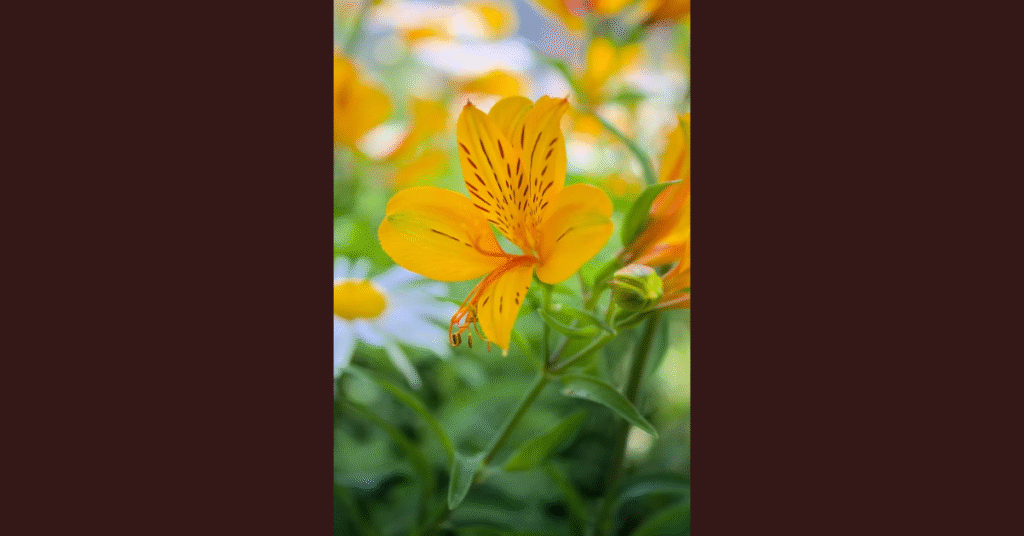Alstromeria, commonly known as the Peruvian lily or lily of the Incas, is a stunning flowering plant native to South America. Characterized by its vibrant colors, delicate petals, and remarkable vase life, Alstromeria has become a favorite in both home gardens and floral arrangements around the world. For those searching for a dependable, beautiful, and symbolic flower to grow or gift, Alstromeria offers an unmatched blend of visual appeal, cultural heritage, and botanical resilience. This article provides a comprehensive understanding of Alstromeria—from its origins to its hybrid variations, growing techniques, symbolic meanings, and commercial significance in today’s horticulture and floral industry.
Table: Overview of Alstromeria
| Feature | Details |
|---|---|
| Scientific Name | Alstromeria aurea, A. psittacina, and hybrids |
| Common Names | Peruvian lily, Lily of the Incas |
| Native Regions | Chile, Brazil, Peru, and Argentina |
| Family | Alstromeriaceae |
| Flower Colors | Pink, purple, orange, red, yellow, white, bi-color |
| Bloom Time | Spring through summer (sometimes into autumn) |
| Symbolic Meaning | Friendship, prosperity, mutual support |
| Lifespan in Vase | 2 to 3 weeks |
| Temperature Preference | Cool to moderate (50°F–70°F / 10°C–21°C) |
| Sunlight Needs | Full sun to partial shade |
| Soil Requirement | Well-drained, fertile soil |
| Primary Uses | Ornamental gardens, cut flower trade |
A Flower Rooted in Rich South American History
Alstromeria was named after Swedish botanist Baron Clas Alströmer, a student of the renowned Carl Linnaeus, who brought the seeds of this plant from South America to Europe in the 18th century. Originally endemic to Chile and Brazil, Alstromeria demonstrates a fascinating case of evolutionary divergence. Chilean species are often winter-growing and dormant in summer, whereas Brazilian species grow in summer and rest in winter. This geographic and climatic duality explains the plant’s broad adaptability to different environments.
The indigenous people of the Andes had used these flowers in ceremonies, associating them with strength and renewal due to their ability to return season after season. In modern floral language, Alstromeria represents enduring friendship and commitment—a symbolism that helps explain its popularity in bouquets and ceremonial arrangements.
Biology and Botany: The Anatomy of a Peruvian Lily
Botanically, Alstromeria is a herbaceous perennial. Its underground rhizomes store energy to sustain the plant through dormancy periods. The plant’s growth begins with narrow, twisting stems that produce clusters of trumpet-shaped flowers. Each bloom features six petals and striking markings—often dashes or spots—that vary significantly between species and hybrids.
What sets Alstromeria apart from true lilies is its resupinate leaves—a botanical term meaning the leaves twist from the base so they appear upside-down. This adaptation is rare and contributes to its unique appearance.
The diversity among species is significant. Some have a more upright posture, while others trail like vines. This variation has given rise to hundreds of cultivars, each bred for specific traits such as color intensity, petal shape, disease resistance, or vase life.
Alstromeria in Cultivation: From Greenhouse to Garden
Growing Alstromeria is relatively straightforward for gardeners and commercial growers alike. It thrives in temperate climates and prefers nutrient-rich, well-drained soil. The plant requires moderate watering, especially during active growth and flowering stages. Overwatering or poor drainage can lead to rhizome rot, one of the few diseases that significantly threaten its longevity.
Gardeners in cooler climates often plant Alstromeria in spring, allowing it to bloom through summer. In warmer regions, autumn planting is preferable. Mulching around the plant base helps regulate temperature and retains moisture. Once established, Alstromeria can bloom repeatedly with regular deadheading and occasional fertilization.
Propagation is typically done through rhizome division rather than from seeds. Seed propagation is slow and can take up to two years for blooming, while division guarantees identical offspring and faster results.
Varieties and Hybrid Marvels
Alstroemeria hybrids dominate the global flower trade. Breeding programs across the Netherlands, Kenya, and Colombia have produced varieties specifically for commercial use. The ‘Inca’ series, for instance, includes compact varieties ideal for containers and small gardens. The ‘Princess Lilies’ are known for their dwarf growth and suitability for indoor cultivation.
Popular cultivars include:
- ‘Indian Summer’ – Rust-orange petals with bronze foliage
- ‘Sweet Laura’ – Yellow with red streaks, notable fragrance
- ‘Apollo’ – White petals with lime green touches
- ‘Inticancha’ series – Bred for compact size, great for patios
Each of these hybrids offers different bloom cycles, petal patterns, and growth requirements, making Alstroemeria one of the most diversified genera in ornamental horticulture.
Commercial Importance: The Cut Flower Industry
Alstroemeria is a powerhouse in the global cut flower industry. Its resilience, vibrant colors, and extended vase life—often exceeding 14 days—make it a florist favorite. Most of the commercial production comes from Colombia and the Netherlands, though countries like Kenya and Ecuador are increasing their export volumes.
The flower’s robust nature allows it to travel well, making it a staple in international flower markets. It is also less expensive than many other long-stemmed blooms like roses or lilies, which adds to its appeal in mixed bouquets.
Florists often pair Alstromeria with roses, chrysanthemums, or gerbera daisies in arrangements meant to symbolize friendship, success, and joy. Its ability to hold shape and color for long durations without wilting is particularly valued in wedding arrangements and sympathy wreaths.







